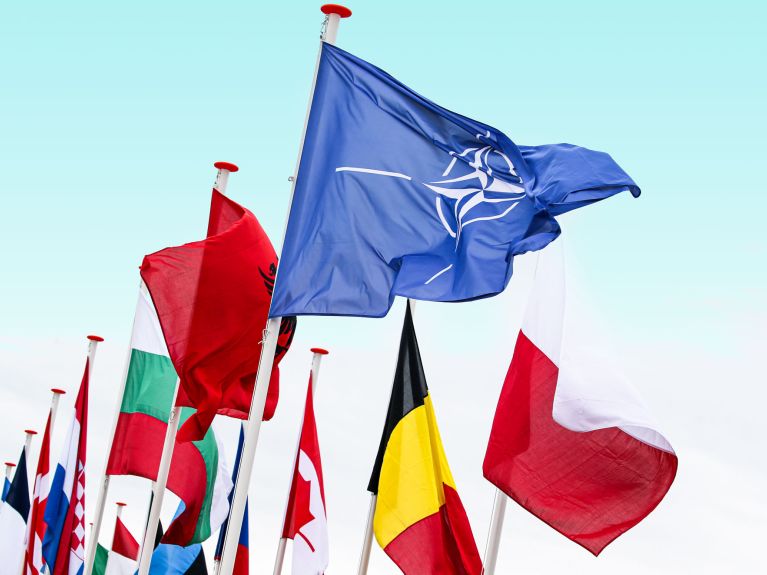How the West was lost
NATO and the EU were created in a world that vanished 30 years ago. Clinging to that lost era means denying the facts of the present day

If solidarity is a valuable commodity, then the West was heaven on earth. It doesn’t matter that NATO and the various European communities started out as emergency solutions. They were the answer of North American and Western European states to the specific challenges posed by the Cold War. The actions, especially in Eastern Europe, of Stalin and his successors were seen as so dangerous and unpredictable that Western nations were prompted to close ranks.
Without the East, there would not have been a West
From that moment on, there was a West, which means that without the East, there would not have been a West. Without this threat from the East, it would have been hard to imagine such enduring solidarity among Americans, the British and the French – not to mention the inclusion of a part of Germany so few years after the end of the Nazi regime.
Dieses YouTube-Video kann in einem neuen Tab abgespielt werden
YouTube öffnenThird party content
We use YouTube to embed content that may collect data about your activity. Please review the details and accept the service to see this content.
Open consent formThese countries and their inhabitants shared a canon of values, determination to protect freedom from external dangers and, last but not least, a strong desire to assert their national independence. Together, they fought to avoid suffering the same fate as the GDR, Poland, Czechoslovakia, Hungary, Bulgaria and Romania, all of which were occupied by the Soviets after 1945, not to mention the Baltic States, which were fully incorporated into the Soviet Union.
Something happened that no one had expected
This situation put the Americans in an incontestably strong position right from the start. Thanks to the fact that they alone were able to guarantee the independence of their allies in the nuclear age, the Americans used their bridgehead in Western Europe not only to push through their legitimate national interests, but also to solidify an uncompromising policy of supervisory control over their partners.
And then, in 1991, something happened that no one had expected: the Soviet Union, including its empire and the Warsaw Pact, collapsed and disappeared. It would have been only logical if the West, too, had exited the world stage following the East’s departure.
A change of the geopolitical architecture
Instead, the opposite occurred. Everything in the West remained the same. The West’s associations continued to operate on the stage they had occupied for decades. In fact, they even beefed up their cast. However, in doing so, NATO and the EU either ignored or forgot to enact precisely those reforms that would have been necessary to adapt to the new – shall we say “East-free” – situation.
The West also took in stride that by incorporating a slew of Eastern and Central European countries into its alliance, they changed the geopolitical architecture of the continent. They ought to have known that this process would have inevitable effects on Russia in particular, especially as the Soviet Union – whose legacy Russia inherited in 1991 – had undergone a no less radical shrinking process in the course of its own implosion.
The full right to seek admission to the European Union
The young states of Eastern and Central Europe naturally had the full right to seek admission to the European Union and the Atlantic Alliance. But did anyone seriously think the Kremlin would stand by and watch these countries join the EU and even NATO, in particular, without reacting?
And the Western alliance went even further. In the spring of 2009, the EU entered into an “Eastern Partnership” with six former Soviet republics, for all practical purposes forcing them to choose between the West and Russia. Yet another far-reaching step was NATO’s decision to station Western troops in former Soviet republics and Warsaw Pact countries, and to include Ukraine – which wasn’t even a NATO member – step by step into its military operations.
A jumping-off point to break international law
In the eyes of the Kremlin leaders, this was evidence of NATO’s expansion to the East and the permanent deployment of American troops in, for example, Poland, which began during the US presidency of Barack Obama meant above all one thing: NATO was now only 200 kilometers away from St. Petersburg.
This could be dismissed as a bit of paranoia on Russia’s part, but that would do nothing to change Moscow’s perception of the situation. From the Russian vantage point, the radical eastern expansion of NATO and the build-up of the American missile defense shield in former Warsaw Pact states are two links in a tangible chain of escalation. For Putin and his team, these moves provided the jumping-off point to break international law, annex Crimea and start a war in Eastern Ukraine.
Read the whole text on The German Times website
Gregor Schöllgen is a professor of history. He taught at the University of Erlangen and at the German Foreign Office and was a visiting scholar at Columbia and Oxford universities as well as at the London School of Economics and Political Science. In 2017, his book “Krieg. Hundert Jahre Weltgeschichte” (“War. 100 years of world history”) was published by DVA.

